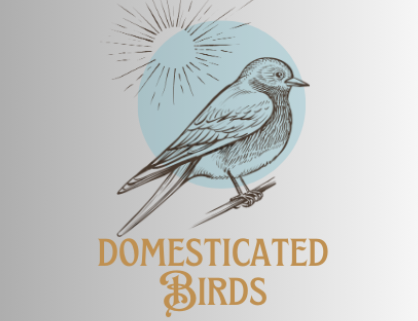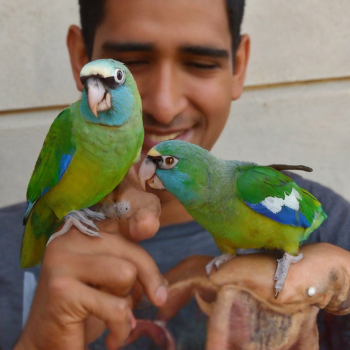Pinous parrot birds, often overlooked in the realm of avian companionship, are a fascinating and rewarding choice for bird enthusiasts. From their vibrant plumage to their intelligent demeanor, these birds have much to offer as pets. In this comprehensive guide, we’ll delve into the world of Pinous parrots, exploring their suitability as pets, their various species, care requirements, and much more.
Understanding Pinous Parrots as Pets
Pinous parrot birds, also known as Pionus parrots, belong to the genus Pionus and are native to Central and South America. Renowned for their calm and gentle disposition, they make excellent companions for bird lovers seeking a more laid-back pet.
Exploring Their Popularity in Aviculture
Despite their charm and amiable nature, Pinous parrots are often overshadowed by more flamboyant species like macaws and cockatoos in the world of aviculture. However, their popularity is steadily growing among discerning bird enthusiasts who appreciate their unique traits and easy-going temperament.
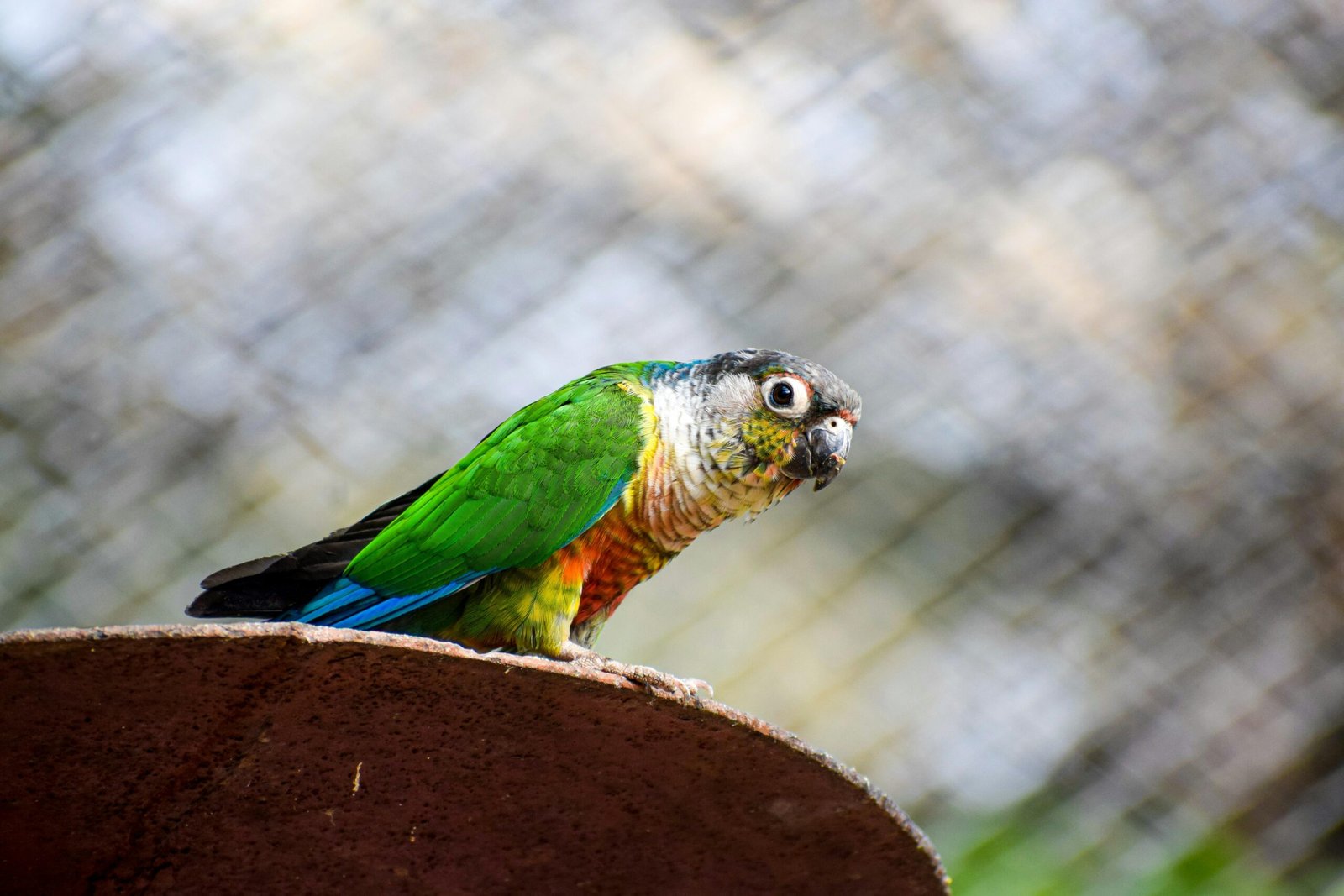
Pinous Parrots as Pets: A Comprehensive Evaluation
Assessing Their Suitability as Pets
Before bringing home a Pinous parrot, it’s crucial to understand their suitability as pets. While they may not boast the striking appearance of some other parrot species, their gentle demeanor and manageable size make them ideal companions for individuals and families alike.
Factors to Consider Before Choosing a Pinous Parrots as pets
- Temperament and Personality: Pinous parrot birds have varying temperaments depending on their species and individual personalities. Consider whether you prefer a bird that is more laid-back, affectionate, or playful, and choose a species that aligns with your preferences.
- Space Requirements: Pinous parrot birds require adequate space to move around, stretch their wings, and exercise. Ensure that you have enough room in your home for a spacious cage or aviary, as well as areas for supervised out-of-cage playtime.
- Lifestyle Compatibility: Assess your lifestyle and daily routine to determine if it’s conducive to caring for a parrot. Consider factors such as work schedule, travel frequency, and other commitments that may impact your ability to provide time and attention to your feathered companion.
- Noise Level: While Pinous parrots as pets are generally quieter compared to some other parrot species, they still vocalize and can produce loud calls, especially during certain times of the day. Consider whether you can tolerate the noise level and if it aligns with your living situation.
- Longevity: Pinous parrots as pets have a relatively long lifespan, with some species living up to 25-30 years or more in captivity. Be prepared for a long-term commitment and ensure that you can provide lifelong care and companionship for your parrot.
- Socialization Needs: Pinous parrot birds are social creatures that thrive on interaction and companionship. Consider whether you have the time and inclination to socialize with your bird regularly, as well as the potential for introducing other pets or avian companions for added stimulation.
- Dietary Requirements: Pinous parrot birds have specific dietary needs that must be met to maintain their health and well-being. Research and prepare a balanced diet consisting of high-quality pellets, fresh fruits, vegetables, and occasional treats, and ensure access to clean water at all times, which we will discuss in detail in following sections.
- Financial Responsibility: Owning a Pinous parrot birds entail various expenses, including initial purchase or adoption fees, cage and equipment costs, ongoing food and supplies, and veterinary care. Assess your financial readiness to provide for your bird’s needs throughout its lifetime.
- Health Considerations: Pinous parrot birds are susceptible to certain health issues such as respiratory infections, feather plucking, and obesity. Familiarize yourself with common health problems and preventive measures, and establish a relationship with a qualified avian veterinarian for regular check-ups and medical care.
- Legal Regulations: Check local regulations and laws regarding pet ownership, especially if you plan to acquire a Pinous parrot from a breeder or rescue organization. Ensure compliance with permits, licensing, and any restrictions on exotic bird species in your area.
Pinous Parrot birds: Ideal Pets for Beginners?
Advantages of Pinous Parrots for Novice Bird Owners
Novice bird owners often find Pinous parrots to be an excellent choice due to their amiable nature and relatively low maintenance requirements. Their calm demeanor and adaptable personalities make them forgiving of beginner mistakes, fostering a positive ownership experience.
Considerations for First-Time Bird Keepers
While Pinous parrots as pets may be suitable for beginners, it’s essential for first-time bird keepers to educate themselves thoroughly on avian care practices. Understanding their specific needs and behaviors is key to providing optimal care and ensuring the well-being of these feathered companions.
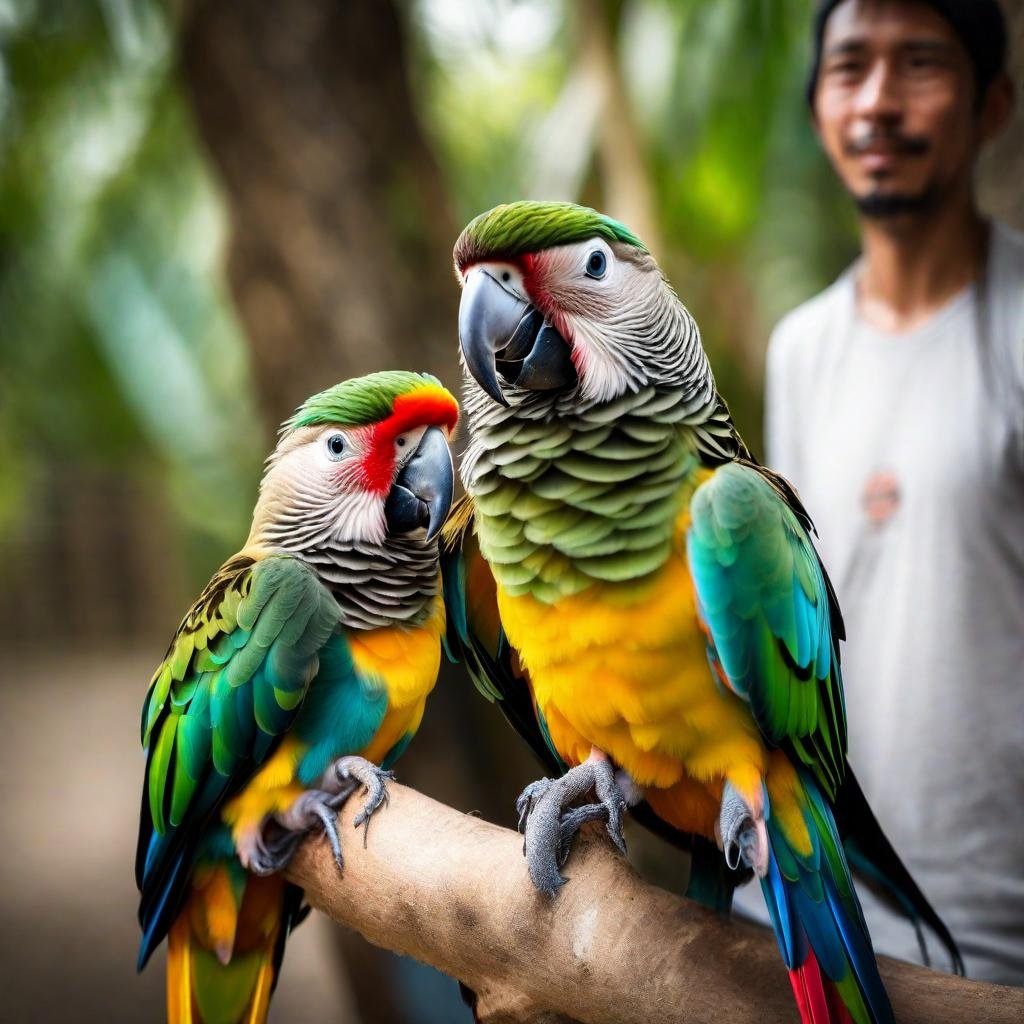
Best Pinous Parrot Birds as Pets
From the gentle Pinous Maximiliani to the affectionate Pinous Senilis and the playful Pinous Fuscus, each species offers something unique to prospective pet owners. Assessing their temperament, size, and specific care requirements is essential for making an informed decision.
1. Pinous Maximiliani: The Gentle Companion
Pinous Maximiliani, also known as the Scaly-headed parrot, is renowned for its gentle and docile nature. This species is an excellent choice for owners seeking a calm and affectionate companion bird.
Owner Preference
With their laid-back demeanor and tendency to form strong bonds with their caregivers, Pinous Maximiliani parrots are ideal for individuals or families looking for a gentle and easy-going avian companion.
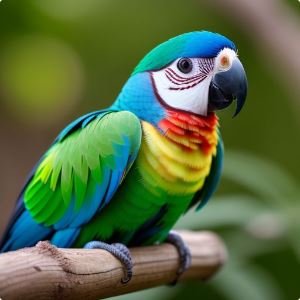
2. Pinous Senilis: The Affectionate Avian
Pinous Senilis, commonly referred to as the White-crowned parrot, is beloved for its affectionate personality and sociable nature. This species thrives on attention and interaction, making it well-suited for owners who enjoy spending quality time with their feathered companions.
Owner Preference
With their propensity for forming deep connections and their outgoing demeanor, Pinous Senilis parrots are perfect for owners seeking a devoted and affectionate avian friend.
3. Pinous Fuscus: The Playful Partner
Pinous Fuscus, also known as the Dusky parrot, is prized for its playful and inquisitive personality. This species delights in engaging with toys, exploring its environment, and interacting with its human companions. Owners who are active and enjoy providing enrichment opportunities for their pets will find Pinous Fuscus parrots to be delightful companions.
Owner Preference
With their energetic nature and love for interactive play, they are perfect for owners seeking a dynamic and playful avian partner.
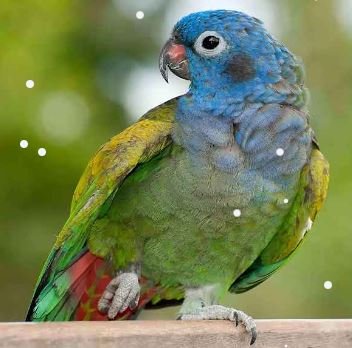
4. Pinous Sordidus: The Tranquil Companion
Pinous Sordidus, commonly known as the Plum-crowned parrot, is prized for its tranquil and serene disposition. This species tends to be more reserved and observant, making it an excellent choice for owners who prefer a calmer and more introspective avian companion.
Owner Preference
With their peaceful nature and gentle demeanor, Pinous Sordidus parrots are ideal for owners seeking a serene and contemplative pet bird.
5. Pinous Menstruus: The Curious Companion
Pinous Menstruus, also referred to as the Blue-headed parrot, is celebrated for its curious and inquisitive personality. This species is known for its love of exploration and its keen interest in its surroundings, making it well-suited for owners who enjoy providing mental stimulation and enrichment activities.
Owner Preference
With their insatiable curiosity and playful demeanor, Pinous Menstruus parrots are perfect for owners seeking an intellectually stimulating and adventurous avian companion.
6.Pinous Chalcopterus: The Affectionate Avian
Pinous Chalcopterus, commonly known as the Bronze-winged parrot, is cherished for its affectionate and sociable nature. This species thrives on social interaction and enjoys bonding closely with its human caregivers, making it an ideal choice for owners seeking a devoted and loving companion bird. With their affectionate disposition and strong desire for companionship,
owner preference
Pinous Chalcopterus parrots are perfect for owners who value close emotional connections with their pets.
Understanding Pinous Parrot Behavior
Body Language Signals:
- Preening: A parrot preening its feathers indicates contentment and comfort. It’s a natural behavior for maintaining feather health and cleanliness.
- Fluffing Up: Fluffing up feathers can indicate relaxation or an attempt to regulate body temperature. However, excessive fluffing may also signal illness or discomfort.
- Wing Stretching: Stretching wings outward and upward is a sign of relaxation and well-being. It’s a common behavior after waking up or during preening.
- Head Bobbing: Head bobbing can indicate excitement or curiosity. Parrots may bob their heads in response to stimuli or when communicating with their owners.
- Tail Position: A raised tail often signifies excitement or heightened arousal, while a lowered tail may indicate fear or submission.
- Eye Pinning: Constricting or dilating pupils, known as eye pinning, can convey various emotions. Dilated pupils may indicate excitement or interest, while constricted pupils may signal aggression or fear.

pinous parrot bird: perching on branch
Vocalizations:
- Chirping: Soft, melodic chirps typically indicate contentment or happiness. Parrots may chirp when they’re comfortable in their environment or seeking attention.
- Squawking: Loud, repetitive squawking may signal distress, fear, or a desire for attention. Parrots may squawk when they feel threatened or when they’re bored and seeking stimulation.
- Whistling: Whistling is often a sign of communication or social interaction. Parrots may whistle to greet their owners, express excitement, or mimic sounds from their environment.
- Mimicry: Pinous parrots are known for their ability to mimic human speech and other sounds. Mimicry can be a form of communication, play, or a way to seek attention from their owners.
- Growling: Growling or low-pitched vocalizations may indicate aggression or discomfort. Parrots may growl when they feel threatened or when they’re defending their territory.
- Purring: Soft, rhythmic purring sounds indicate contentment and relaxation. Parrots may purr when they’re being petted or when they’re in a comfortable and secure environment.
Understanding these body language signals and vocalizations can help Pinous parrot owners interpret their bird’s behavior and respond accordingly.
Considerations for Pinous Parrot Ownership
Habitat and Space Requirements
Providing a suitable habitat is essential for the well-being of Pinous parrots. Ample space for flying and exercise, along with enriching toys and perches, contributes to their physical and mental health.
Time and Commitment Involved in Care
Owning a Pinous parrot entails a significant commitment of time and effort. Daily interaction, mental stimulation, and proper grooming are essential for fostering a strong bond and ensuring the bird’s overall welfare.
Budgeting for Pinous Parrot Maintenance
In addition to initial acquisition costs, prospective owners should budget for ongoing expenses such as food, veterinary care, and supplies. Adequate financial planning is crucial for providing quality care and addressing any unexpected expenses that may arise.
Dietary Requirements and Feeding Schedule for Pinous Parrots:
- Balanced Diet: Provide a balanced diet consisting of high-quality pellets, fresh fruits, and vegetables to meet the nutritional needs of Pinous parrots.
- Fresh Fruits: Include a variety of fresh fruits such as apples, grapes, berries, and oranges in their diet to provide essential vitamins and minerals.
- Fresh Vegetables: Incorporate a selection of fresh vegetables like leafy greens, carrots, bell peppers, and broccoli to offer dietary fiber and additional nutrients.
- Occasional Treats: Offer occasional treats such as nuts, seeds, and whole grains in moderation to add variety and enrichment to their diet.
- Clean Water: Ensure access to clean and fresh water at all times to prevent dehydration and promote overall health.
- Feeding Schedule: Offer food in two main meals per day, supplemented with small snacks or treats throughout the day to maintain energy levels and prevent boredom.
- Morning Meal: Provide the first meal in the morning, consisting of a combination of pellets, fresh fruits, and vegetables to kickstart their metabolism.
- Evening Meal: Offer the second meal in the early evening, providing a similar combination of pellets, fruits, and vegetables to meet their nutritional needs.
- Monitor Food Intake: Monitor food intake closely and adjust portion sizes as needed to maintain a healthy weight and prevent obesity.
- Rotate Food Items: Rotate food items regularly to prevent dietary boredom and ensure a diverse nutrient intake.
- Avoid Toxic Foods: Avoid feeding toxic foods such as avocado, chocolate, caffeine, and alcohol, which can be harmful to Pinous parrots.
- Consult with a Vet: Consult with an avian veterinarian to create a personalized diet plan tailored to your Pinous parrot’s specific nutritional requirements and health needs.
- Supplements: Consider offering calcium supplements or vitamin supplements under the guidance of a veterinarian to address any potential deficiencies in their diet.
- Consistency: Maintain a consistent feeding schedule and diet to promote digestive health and overall well-being for your Pinous parrot.
Housing Setup and Cage Design for Pinous Parrots
- Appropriate Cage Size: Select a cage that provides ample space for your Pinous parrot to move around, stretch its wings, and engage in natural behaviors. The cage should be large enough to accommodate perches, toys, and feeding stations while allowing plenty of room for exercise.
- Bar Spacing: Ensure that the cage bars are spaced closely enough to prevent escape or injury, but not so close that they inhibit movement or cause discomfort for the bird. Opt for cages with horizontal bars, as they facilitate climbing and provide additional opportunities for exercise.
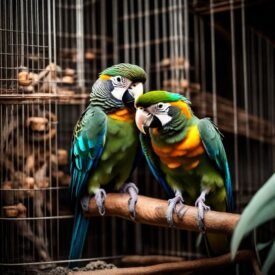
pinous parrot birds: inside Cage
- Durable Construction: Choose a cage made of sturdy and non-toxic materials such as stainless steel or powder-coated wrought iron. Avoid cages with zinc or lead components, as these can pose health hazards to parrots.
- Easy Cleaning and Maintenance: Select a cage with removable trays or grates for easy cleaning and disinfection. Consider cages with slide-out trays or bottom grates to simplify waste removal and cage maintenance.
- Environmental Enrichment: Incorporate various perches of different sizes and textures to promote foot health and provide mental stimulation. Include natural branches, rope perches, and chewable toys to encourage physical activity and prevent boredom.
- Location and Placement: Place the cage in a well-lit and draft-free area away from direct sunlight, heaters, or air vents. Position the cage at eye level or slightly higher to facilitate social interaction and bonding with the bird.
- Temperature and Humidity Control: Maintain a comfortable temperature range between 65 to 80 degrees Fahrenheit (18 to 27 degrees Celsius) and humidity levels between 40% to 60%. Use room humidifiers or misting systems to ensure adequate humidity levels, especially in dry climates.
- Safety Considerations: Remove any hazardous items or potential toxins from the vicinity of the cage, including electrical cords, toxic plants, and household chemicals. Use cage covers or barriers to prevent access to windows or mirrors, which can pose collision risks for flying birds.
Bonding with Your Pinous Parrot birds
Establishing Trust and Building a Strong Relationship
Building trust is essential for forging a strong bond with your Pinous parrot. Patient and consistent interaction, along with respect for the bird’s boundaries, lays the foundation for a mutually rewarding relationship based on trust and mutual respect.
Quality Time Activities to Enhance Bonding
Engaging in quality time activities strengthens the bond between owner and bird and provides valuable mental stimulation for the parrot. Interactive play, training sessions, and outdoor excursions enrich the bird’s life and deepen the connection with its human companion.
Owner Testimonials and Suggestions
1. Sarah H. – “A Loving Companion”
“My Pinous Maximiliani parrot has been a loving companion for years.”
Sarah highlights the strong bond she shares with her Pinous Maximiliani parrot, emphasizing the bird’s affectionate nature and its role as a cherished member of the family.
“Provide plenty of social interaction and mental stimulation to keep your Pinous parrot happy and healthy.”
Owner suggesion:
Sarah advises other owners to prioritize social interaction and mental stimulation for their Pinous parrots, recognizing the importance of keeping these intelligent birds engaged and fulfilled.
2. Michael T. – “Endless Entertainment”
“Pinous Senilis parrot brings endless entertainment with its playful antics.”
Michael expresses delight in the playful behavior of his Pinous Senilis parrot, highlighting the joy and amusement it brings to his household.
“Invest in a variety of toys and activities to keep your Pinous parrot engaged and stimulated.”
Owner Suggesion:
Michael recommends investing in a diverse range of toys and activities to cater to the energetic nature of Pinous parrots, ensuring they remain mentally and physically stimulated.
3. Emily G. – “A Joyful Addition”
“Pinous Fuscus parrot has been a joyful addition to our family.”
Emily describes how her Pinous Fuscus parrot has brought joy and happiness to her family, underscoring the positive impact of owning such a lively and charismatic bird.
“Regular training sessions and positive reinforcement are key to building a strong bond with your Pinous parrot.”
Owner suggestion:
Emily emphasizes the importance of regular training sessions and positive reinforcement techniques in fostering a strong bond between owners and Pinous parrots, highlighting the mutual trust and understanding that result from consistent interaction.
4. David L. – “Remarkable Intelligence”
“Pinous Maximiliani parrot never fails to impress with its remarkable intelligence.”
David marvels at the intelligence of his Pinous Maximiliani parrot, recognizing its ability to learn and problem-solve, which adds to the bird’s appeal as a pet.
“Incorporate interactive games and puzzles into your Pinous parrot’s daily routine to stimulate their cognitive abilities.”
Owner Suggesion:
David suggests incorporating interactive games and puzzles into the daily routine of Pinous Maximiliani parrots to stimulate their cognitive abilities, promoting mental enrichment and preventing boredom.
5. Jessica M. – “Affectionate Companion”
“Pinous Senilis parrot has stolen my heart with its affectionate nature.”
Jessica expresses affection for her Pinous Senilis parrot, highlighting the strong emotional bond they share and the bird’s capacity for affectionate gestures.
“Establish a daily routine and spend quality time bonding with your Pinous parrot to nurture your relationship.”
Owner suggestion:
Jessica emphasizes the importance of establishing a daily routine and dedicating quality time to bonding with Pinous parrots, fostering a deeper connection and mutual trust between owner and bird.
6. Brian K. – “Energetic Charm”
“Pinous Fuscus parrot’s energetic charm brightens up our home every day.”
Brian appreciates the lively and spirited personality of his Pinous Fuscus parrot, acknowledging the positive energy it brings to their household.
“Create a safe and stimulating environment with plenty of opportunities for physical activity and exploration.”
Owner Suggestion:
Brian advises other owners to create a safe and stimulating environment for Pinous Fuscus parrots, encouraging opportunities for physical activity and exploration to satisfy their energetic nature and curiosity.
Conclusion
In conclusion, Pinous parrot birds are delightful companions cherished for their gentle nature, vibrant personalities, and strong bonds with their human caregivers. Whether you’re a novice bird owner or an experienced avian enthusiast, these charming birds have much to offer in terms of companionship and joy.
FAQs
Do Pinous Parrots require a lot of attention?
Yes, Pinous parrots thrive on social interaction and mental stimulation. Owners should dedicate time each day to interact with their parrot through play, training, and companionship to ensure their well-being and happiness.
What is the lifespan of Pinous Parrots?
Pinous parrots have a relatively long lifespan, ranging from 20 to 30 years or more in captivity with proper care. This longevity underscores the importance of committing to their care for the duration of their lives.
Are Pinous Parrot birds prone to any specific health issues?
While generally hardy, Pinous parrots can be susceptible to respiratory infections, obesity, and behavioral issues like feather plucking if not provided with proper care. Regular veterinary check-ups and a balanced diet are essential for maintaining their health.
How do I know if a Pinous Parrot is the right pet for me?
Pinous parrot might be perfect for you if you are seeking a companion that is not overly demanding but still enjoys interaction. They are great for owners who want a quieter bird with a charming personality. If you value a pet that is affectionate and sociable without requiring constant attention, a pionus parrot could be ideal match for you.
